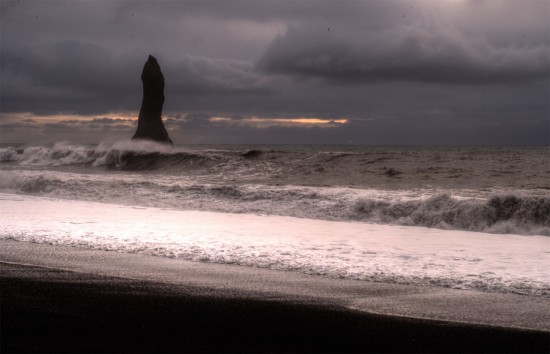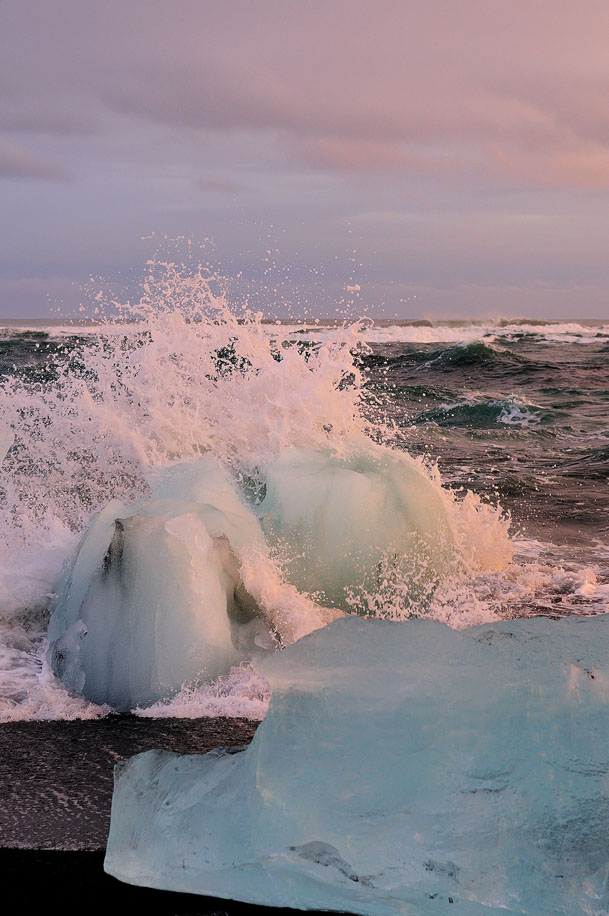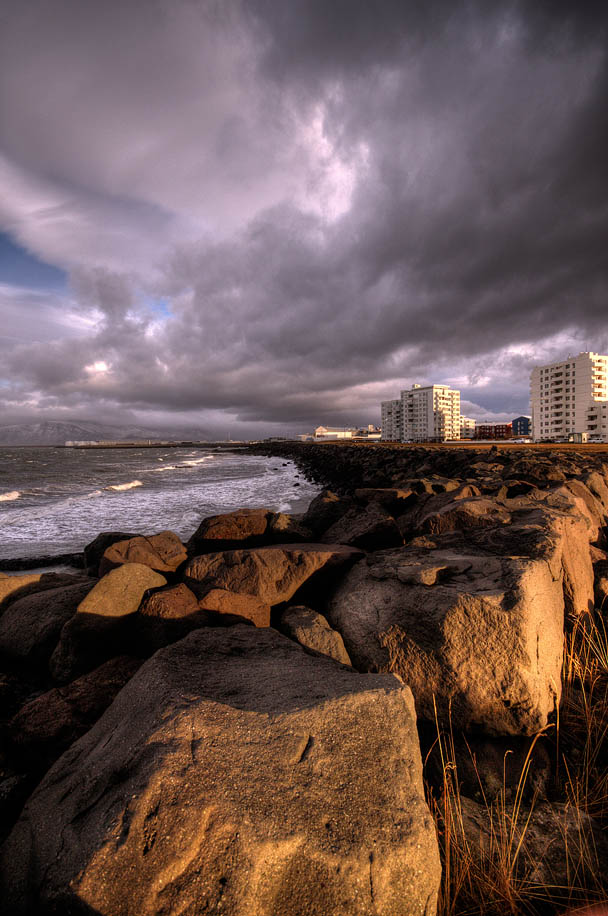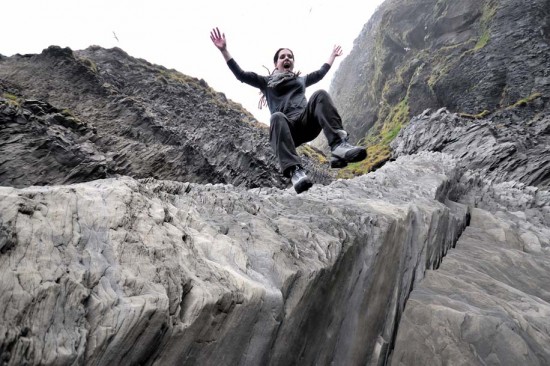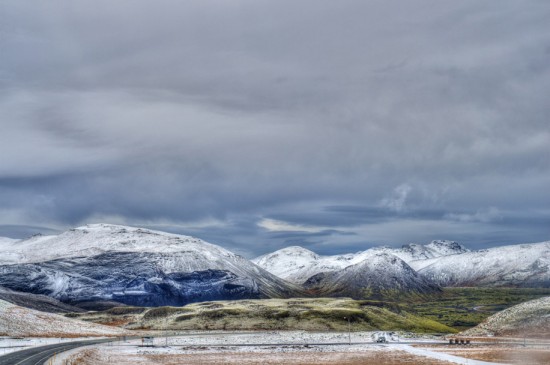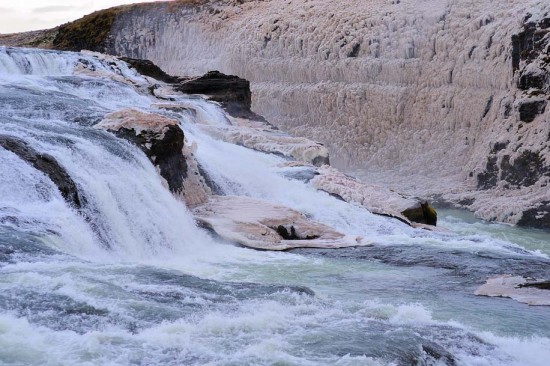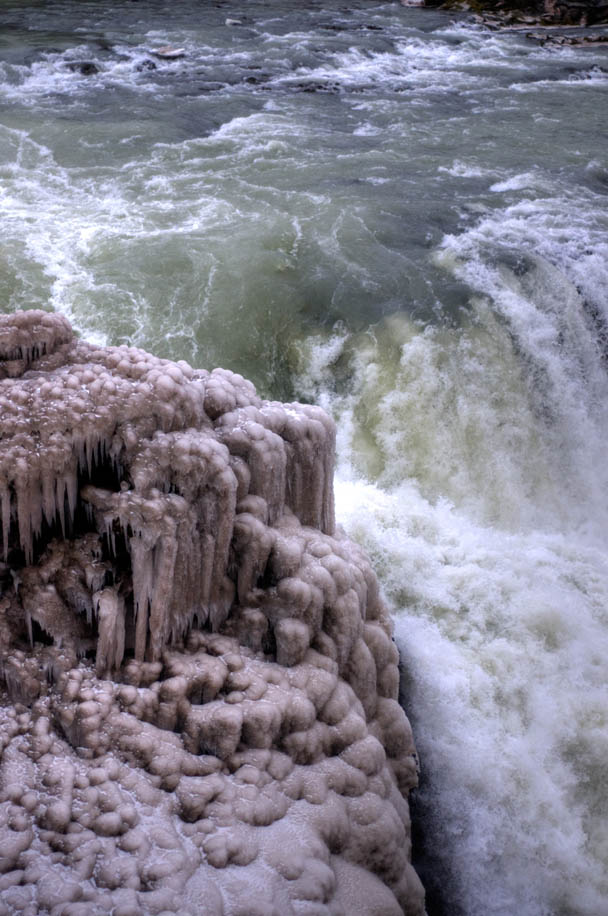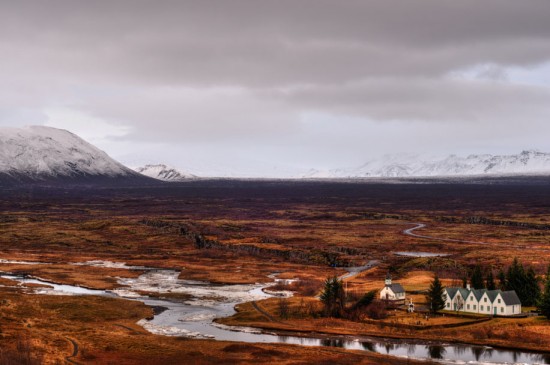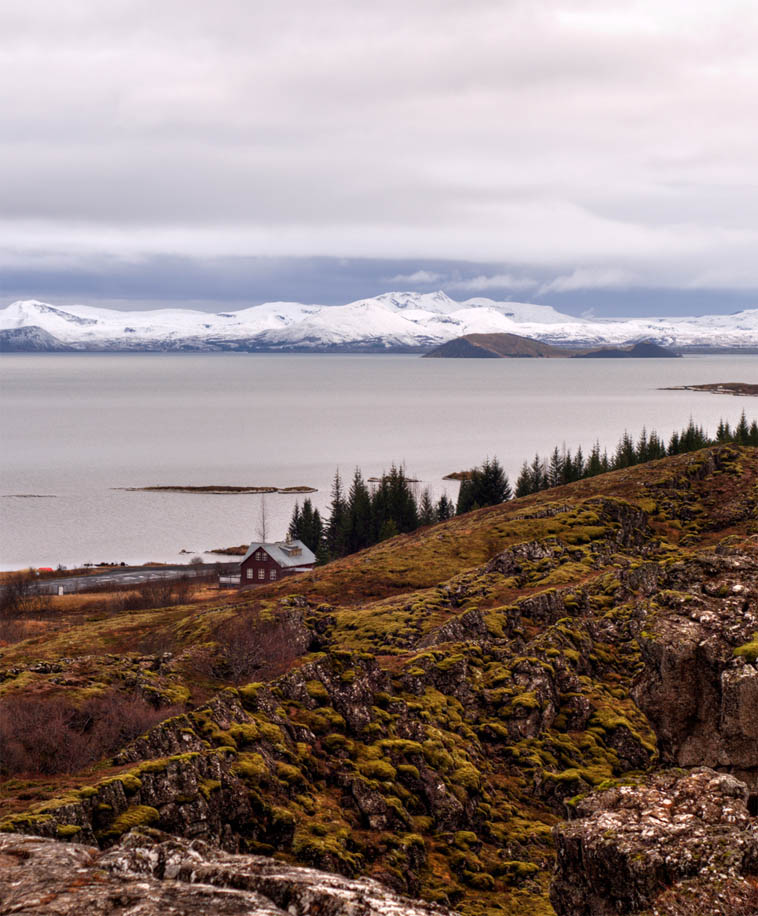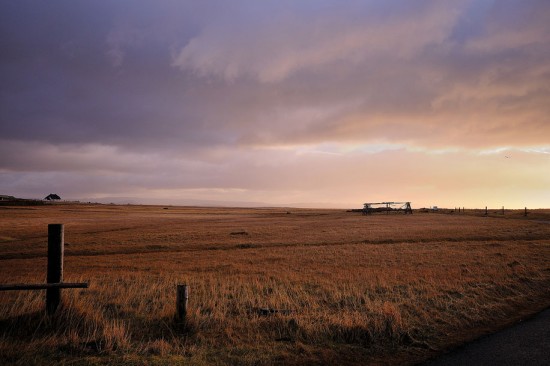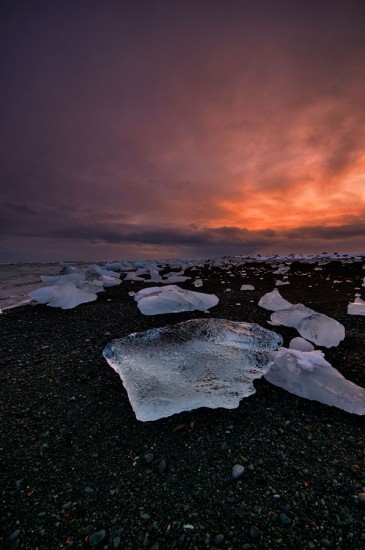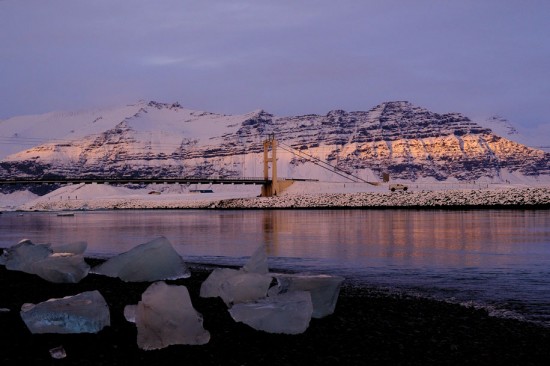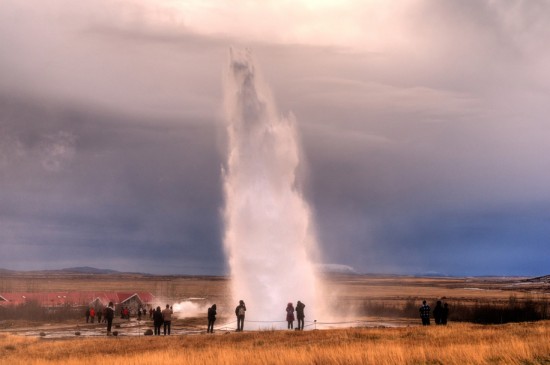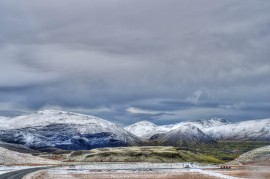
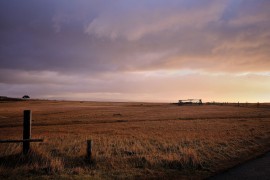
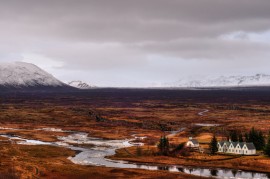
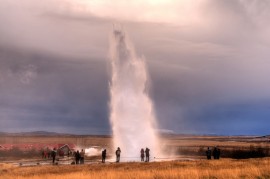
Chris from www.amateurnikon.com will share some tips on photographing in Iceland, particularly from the perspective of overcoming limitations (of equipment as well as weather/environment):
Although our world is filled with unique, intriguing places, Iceland is arguably a true photographer’s paradise. From its sublime mountainous vistas to its active volcanoes, and from its deep blue glacier lagoons to its spectacular rock formations, a photographer will never get bored there.
However, being at a place that is out of the ordinary involves certain aspects one needs to be aware of. There are limitations that are, if not unique for photographing in Iceland, rarely encountered in other places (and certainly so in your typical city environment). The interesting part here, and what perhaps inspired me to offer this article, is that there are lessons to be learned that can also be applied in a more general context. In other words, I have come to realize, the lessons I learned from my photographic expedition in Iceland have helped me become a better photographer in general. In this text, I want to share with you these experiences. I will talk about the concept of limitations in photography – in regard to equipment as well as environment – and I will also offer you concrete tips that might be very useful if you travel to Iceland (or any other location sharing similar characteristic). Ultimately, the important lesson here is this: not producing great images is not because of limitations (of any kind); it is because you were paralyzed by them.
The first limitation I encountered materialized before I even boarded the plane, before I even left the house: At the time of my trip, the only camera available to me was a D300 – horror of horrors, a DX camera with an “obsolete” sensor. In addition, I only had two lenses available, the Sigma 10-20 and the venerable AF-D 50mm f/1.8. I certainly did not let that bring me down. In fact, I decided it was a good idea to travel light and left my tripod at home.
TIP #1: If you travel to Iceland, be prepared for a LOT of hiking on very rough terrain (that is, if you plan to visit places worth visiting). You certainly don’t want to carry a lot of things with you.
In hindsight, having a wide zoom and a short tele (because that’s what 50mm is on DX) was all I needed. Perhaps an 85mm instead of the 50mm would be better, but I never felt I missed a tele at any point. Here’s something I have learned through long (and painful) experience: Never complain about the lenses you could have had; use what you do have, and take awesome pictures with them. You see, limitations in relation to equipment never mean you can’t make good photos. At worst, they mean you can’t make a certain kind of photos. More often than not, they simply mean you have to be more innovative and creative, and actually work for your images – trust me, this is a humbling as well as rewarding exercise.
TIP #2: Always follow the advice of your guide and never take any risk. Nature in Iceland can be unpredictable and dangerous. When visiting beaches, stay away from the water – there are often waves much larger than the rest, that can (and sadly have) drag people back into the ocean as they retreat. When visiting thermal springs, never step outside the designated path.
Limitations in regard to equipment are, to some extent, something you can control. If, for instance, you don’t have a very wide angle lens, nor the option to go further back from the subject, you could take several shots with your 50mm and then stitch them together. But there are also limitations you can’t control. In Iceland, this is painfully obvious when it happens. I am talking about limitations in regard to the environment.
TIP #3: Winds in Iceland can be fierce. Forget about 1/FL guidelines. I discovered that on a very windy day, I needed 1/250 for handheld shots with the 50mm
When you are taking photos in your back yard or your town, you don’t think about limitations spawning from the environment (unless if you want to count a traffic jam as a limitation). When you travel to a place such as Iceland (for many a once-in-a-lifetime opportunity), things like overcast or a blocked road can feel paralyzing. They don’t have to be. In fact, you must not allow them to be. As I said before, the biggest mistake a photographer can make is to allow limitations to paralyze her/him.
I stayed in Iceland for about 10 days, and let me tell you, the weather was cloudy 80% of the time. Worse still, for much of the time there was a thick wall of fog that covered everything. Things like these can make you feel frustrated, indignant even. Work with what you have. Eyjafjallajökull does look better under a blue sky and with green fields in the foreground, but be creative. Focus on showing thoughts and feelings – affect, in other words. How does the scene before your eyes make you feel? The less you have to work with, the more creative you become.
TIP #4: When visiting hot springs or other places with sulfur vapors, always dry your lens and camera immediately afterwards with a soft cloth. Never allow it to dry on the lens.
One thing I have also come to realize (and my trip to Iceland was perhaps a turning point in truly grasping that) is this: Not all your photos can be masterpieces. Most of them will, in fact, be unsuccessful ones for one reason or another. I took close to a thousand images during my stay. About ten of them are images I’m reasonably happy with. That’s more than one could hope for – Ansel Adams had once said that if you take about a dozen great images per year, you’re doing it right. So, don’t be too hard on yourself.
Photography involves luck, too. You will have your lucky moments, as I had mine. The weather was appalling (thick fog and overcast) when I visited Mount Eyjafjallajökull and the Skógafoss waterfalls, so I got absolutely nothing worth showing from there. But guess what? I found myself at the Vatnajökull glacier at around sunset and, lo and behold, the sun managed to penetrate the clouds at around that time, giving me some of my favorite shots from the entire journey. No point lamenting what you did not photograph (whether because of environment or equipment); focus on what you did photograph.
TIP #5: When approaching waterfalls, the spray will be all over the place even not in the direct vicinity of the waterfall. Make sure you have pieces of cloth with you to dry your lens, otherwise many of your shots will be ruined (due to fogged element, droplets on the element, or focus problems).
As a conclusion, I would like to repeat myself once more (but only because I can’t stress enough how important it is): Very few photos were not made because you didn’t have camera A or lens B with you. As someone has aptly said, the most important photos in the history of humankind have been made with far lesser equipment than what we use nowadays. And I can certainly speak of myself when I say that I have been the reason behind each and every single photo I did not make. I did not have a D810 or a D4 in my Iceland trip. I did not have the 14-24, nor the 400mm f/2.8 (nor a mule to carry it up the mountains). That was not why I did not make the photos I did not make. In some cases I could blame the weather, although I prefer to blame myself. But I’d rather focus on the photos I did make. None I consider a masterpiece, but I’m very happy with several of them. And few things can be more rewarding in photography than the realization that you can overcome limitations in environment, equipment, as well as your own self, and produce something worth showing and remembering.
Chris
Visit my site, www.amateurnikon.com for photography tips and Nikon reviews.
